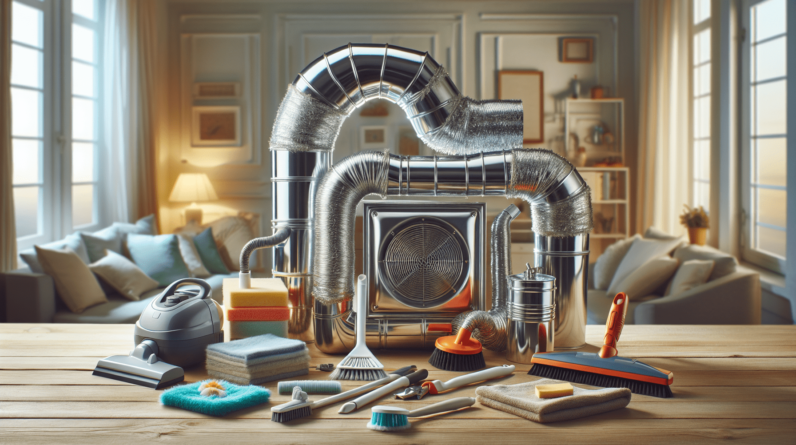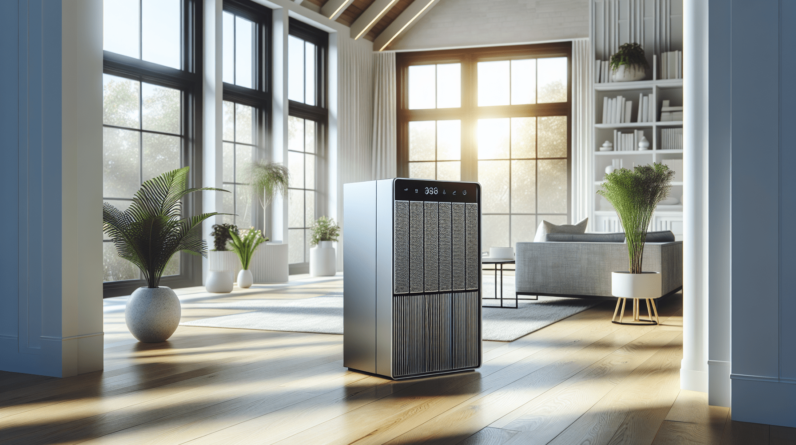

Do you ever find yourself feeling uncomfortable in your own home during those sweltering summer days? It can be tough to stay cool when the heat outside is relentless. If you’re searching for an effective way to beat the heat, a mini air conditioner split system might just be what you need. Let’s break down what it is, how it works, its advantages, and what to consider when choosing the right system for your space.

What is a Mini Air Conditioner Split System?
A mini air conditioner split system is a type of cooling system that consists of two main components: an indoor unit and an outdoor unit. The indoor unit is typically mounted on a wall or ceiling, while the outdoor unit is placed outside the building. This design allows for efficient cooling without the need for bulky window units or extensive ductwork.
How Does It Work?
The mini split system operates using refrigerant to transfer heat from inside your home to the outside environment. This process involves the following steps:
- Refrigerant Absorption: The indoor unit absorbs heat from the room air using evaporator coils filled with refrigerant.
- Heat Transfer: The refrigerant, now in gas form, flows to the outdoor unit, where it condenses back into a liquid as it releases heat to the outside air.
- Cooling Cycle: This cycle repeats, allowing your indoor space to stay cool and comfortable.
Understanding this cycle helps highlight the efficiency and effectiveness of a mini air conditioner split system.
Benefits of Mini Air Conditioner Split Systems
You might wonder, why should you consider a mini air conditioner split system? The reasons can be quite compelling:
Energy Efficiency
Mini split systems are generally more energy-efficient than traditional air conditioning systems. With variable speed compressors, they can adjust their power output, leading to lower energy consumption. This is not only good for the environment but can also help you save on your electricity bills.
Zoning Capabilities
If you have specific preferences for different rooms, a mini split system offers zoning capabilities that allow you to cool each space independently. You can set different temperatures for different areas, making it comfortable for everyone in your home.
Space-Saving Design
The compact design of mini split systems allows them to fit into tight spaces. Unlike traditional units that require ducts, mini splits can be installed without taking up much room, giving you more flexibility in terms of interior design.
Quiet Operation
Many homeowners appreciate the quiet operation of mini split systems. The noisy compressor is located outside, while the indoor unit generates minimal sound. This can make a significant difference, especially in bedrooms or quiet living areas.
Easy Installation
Installation of mini split systems is often easier than traditional AC systems. Since they do not require ductwork, the setup can be completed in a matter of hours. This is a great advantage for retrofitting older homes or spaces without existing duct systems.
Components of a Mini Air Conditioner Split System
To fully appreciate the benefits of a mini split system, it’s important to understand each component’s role.
Indoor Unit
The indoor unit holds the evaporator coil, which cools the air in your home. It also contains a fan to distribute the cool air effectively. Indoor units come in various styles, including wall-mounted, ceiling-mounted, and floor-mounted options, allowing you to choose one that fits your space best.
Outdoor Unit
The outdoor unit houses the compressor and the condenser. It plays a vital role in the cooling process by releasing the heat collected by the refrigerant. Proper placement of the outdoor unit is essential for optimal performance—ensure it’s in a well-ventilated area away from obstructions.
Remote Control
Most mini split systems come with a remote control, allowing you to easily adjust the settings from anywhere in the room. This user-friendly feature enhances convenience and comfort.
Refrigerant Lines
The indoor and outdoor units are connected through refrigerant lines, which carry the refrigerant between both units. Proper installation of these lines is crucial for efficient operation and preventing leaks.
Choosing the Right Mini Air Conditioner Split System
Now that you’re informed about mini split systems, you might be considering one for your space. Here’s what to look for:
Assess Your Space
Measure the size of the area you want to cool. Mini split systems are rated by BTUs (British Thermal Units), which indicates how much heat the unit can remove. An undersized unit will struggle to cool your space, while an oversized unit may cool too quickly without effectively controlling humidity.
| Room Size (sq. ft.) | BTU Rating |
|---|---|
| Up to 300 | 6,000 |
| 300 – 500 | 8,000 |
| 500 – 1,000 | 12,000 |
| 1,000 – 1,300 | 15,000 |
| 1,300 – 1,600 | 18,000 |
Determine the Number of Zones Needed
If you want to create different temperature zones in your home, consider how many indoor units you need. Some systems allow you to connect multiple indoor units to a single outdoor unit, providing flexibility in configuration.

Look for Energy Efficiency Ratings
Check the Energy Efficiency Ratio (EER) and Seasonal Energy Efficiency Ratio (SEER) ratings when selecting a mini split system. A higher rating means greater efficiency, which can result in significant energy savings over time.
Consider Additional Features
Many modern mini split systems come with features such as Wi-Fi connectivity, air purification, or even heating capabilities. Think about what features matter to you and your lifestyle.
Consult a Professional
Installing a mini split system can be a complex task, especially when determining proper placement and sizing. It’s often wise to consult with an HVAC professional who can help you make the best decisions based on your specific needs.

Installation Process of Mini Air Conditioner Split Systems
The installation process of a mini split system involves several steps:
Step 1: Site Evaluation
A professional will assess your space to determine the best locations for both the indoor and outdoor units. This evaluation considers factors like accessibility, existing obstructions, and layout.
Step 2: Indoor Unit Mounting
Once the best location for the indoor unit is determined, it will be mounted securely on the wall or ceiling. This step may require drilling holes to secure the unit and fit the refrigerant lines.
Step 3: Outdoor Unit Placement
The outdoor unit should be placed on a solid, level surface away from direct sunlight and strong winds. This could be a concrete pad or a specialized bracket.
Step 4: Connecting Refrigerant Lines
Sensibly connecting the indoor and outdoor units using insulated refrigerant lines is essential. This requires attention to detail to prevent leaks and ensure efficient operation.
Step 5: Electrical Connections
Electricity must be run to both the indoor and outdoor units. Handling electrical components can be complex and should always be done by a licensed electrician or HVAC technician.
Step 6: System Testing
Once everything is connected, your technician will thoroughly test the entire system to ensure it’s functioning properly. This includes checking for leaks, verifying the refrigerant levels, and confirming the unit cools appropriately.
Maintenance Tips for Mini Air Conditioner Split Systems
To ensure your mini split system operates efficiently and lasts as long as possible, regular maintenance is key. Here are some maintenance tips for you to consider:
Clean or Replace Filters Regularly
Dirty filters can restrict airflow and reduce efficiency. Make a habit of checking and cleaning your filters every few weeks, or replace them according to the manufacturer’s guidelines.
Keep the Outdoor Unit Clear
Make sure the area surrounding your outdoor unit is clear of debris, leaves, or any obstructions. This helps maintain airflow and efficient operation.
Schedule Professional Inspections
Arrange for a professional inspection and servicing at least once a year. Trained technicians can identify potential issues before they become significant problems.
Monitor Refrigerant Levels
Low refrigerant levels can indicate leaks or other issues. If you notice reduced cooling performance, it’s best to consult a professional to check the refrigerant levels.
Clean the Coils
Regularly clean the evaporator and condenser coils to remove dust and debris. This can improve efficiency and extend the life of your system.
Troubleshooting Common Problems
Even with regular maintenance, you may encounter some common issues with your mini split system. Here’s how you might troubleshoot them:
Lack of Cool Air
If your mini split isn’t cooling as expected, first check the filters. If they are dirty, clean or replace them. Ensure that the outdoor unit isn’t blocked by debris, and verify that the refrigerant levels are adequate.
Unusual Noises
If you hear strange noises coming from your unit, it may be due to loose parts or debris caught in the fan. Consult a professional to help identify and fix the issue.
Incorrect Temperature Settings
Sometimes, the issue may lie with the remote control or settings. Double-check your settings, and make sure the unit is set to cooling mode. If the problem persists, a technician may need to troubleshoot the problem.
Water Leakage
A clogged drain line might be the culprit if you notice water around the indoor unit. Carefully inspect and clear any blockages. If you are uncomfortable doing this yourself, call a professional.
Conclusion
Investing in a mini air conditioner split system can transform how you experience heat during the summer months. With efficient cooling, zoning capabilities, and quiet operation, these systems provide comfort while saving energy. Understanding the benefits, components, and maintenance tips, along with everything from installation to troubleshooting, empowers you to make an informed choice for your home.
With a mini split system, you can enjoy a cool, comfortable environment even when the temperatures rise outside. So, are you ready to take the plunge into refreshing comfort and make this summer your best one yet?






